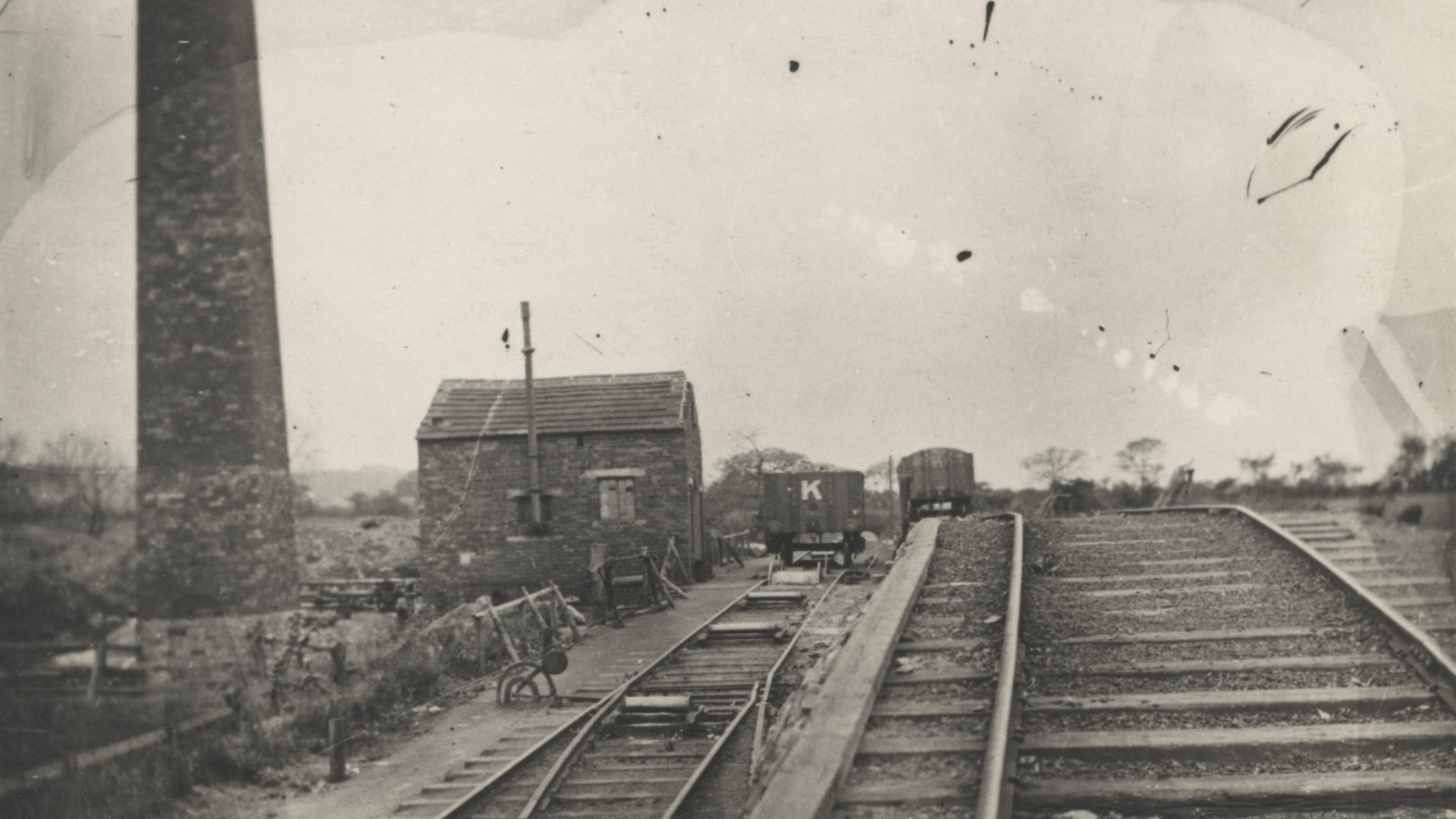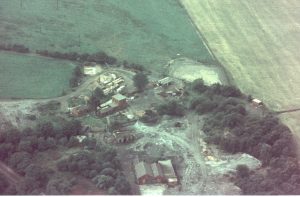The Tunnel to Success: Part One

Until now, many of the visitors to the National Coal Mining Museum of England have walked around the Hope Pit site and perhaps noticed an insignificant looking tunnel entrance in a corner next to the Fan House. They might have wondered briefly where the tunnel led to, but few people will have been aware of the vital part it played in the survival of these collieries for so many years – and possibly that without the mineral line which it was part of, the National Coal Mining Museum would not be here today.
The tunnel leads under the A642 road which is next to the museum, and it was the beginning of the Caphouse Colliery Mineral Line (or the Lister-Kaye mineral Line as it was known). When this small railway opened in 1854 it changed the fortunes of the Lister-Kayes who owned the Denby Grange Collieries and the futures of Caphouse and Hope pits.
The Tunnel has been closed to the public for many years, but it was re-opened few years ago when the Hope Pit Explore Tour run by volunteers with mining experience, took visitors around the buildings on the Hope Pit site and into the tunnel to explore some aspects of the history of mining. This was offered as an addition or alternative to an underground tour. It has also been used as an unusual atmospheric teaching space where our living history performers gave mining history talks to parties of school children.
The Tunnel for 2025 has now been transformed into an exciting new experience led by Mine Guides – a brand new accessible, immersive Time Tunnel Experience where visitors will travel through time with the Mine Guides discovering the history of mining.
The Lister-Kaye family of Denby Grange
In the early 1800s’ with the dawn of the Industrial Revolution, demand for coal for manufacturing industries increased massively. Coal was the main energy source supplying the power essential for most of the new technological innovations of the time, as well as for domestic use in the expanding towns and cities. As a result of this ever-increasing demand, existing collieries were expanded and new ones developed in many areas of Great Britain.
Sir John Lister-Kaye who owned the nearby Denby Grange estate took over the lease of Overton (Caphouse)Colliery in 1827. He died shortly after, and his son Sir John Lister Lister-Kaye inherited the title and estate. The young Sir John took a mining lease from Lord Wharncliffe on a large area of land which included the site of the Hope and Caphouse Collieries.
There is evidence that there were coal leases and mining activity on the Caphouse Colliery site from as early as 1778 and a 1791 plan shows shafts being sunk – including shaft 17 which coincides with the present Caphouse winding shaft. Overton Collieries’ New Hards shaft – now Caphouse No1 shaft, was sunk in 1828 followed by Hope and Blossom pits which were sunk between 1828 and 1840. (New Hards is the type of coal mined).
When Sir John Lister-Lister Kaye inherited the Denby Grange Estate the collieries were successfully supervised by a consulting engineer John Blenkinsop until he retired in 1830. By 1837 however, under different management, they were in serious financial difficulties and Sir John was sent for to assess the situation. Instead of going himself he sent his wife Lady Matilda in his place who wrote at the time ‘For various reasons (he) thought it better to send me’ to sort the crisis out.
Lady Matilda was a very modern woman for her time. She found that collieries were now in debt and being mismanaged. She took on the task of personally sorting out the colliery finances. She apparently ‘hijacked’ the colliery books and found them ‘a mass of Roguery and extravagance’.
Improving coal production
Lady Matilda was very hands-on in the running of the colliery from then on and by 1840 expansion of the two collieries was taking place. In 1838 the New Hards Shaft (now Caphouse Colliery No 1 shaft) was sunk, followed by Hope and Blossom pits by 1840.
The re-opening the Hope Pit shaft was also on the advice of Lady Matilda. This shaft had been closed due to serious problems of flooding but when the Inman Shaft was sunk in 1841, and a new steam powered Beam pumping engine installed this enabled Hope Pit to open once more. She also instigated the installing of 45 Beehive Coking ovens on the site as coal from this New Hard seam was suitable to make coke to be used by locomotives, and by 1854 they were producing 350 tons of coke weekly in 142 ovens.

Transporting the coal to their customers
When the Sir John took over Caphouse its coal was mainly sold locally. The coal was transported by horse and cart on the turnpike road (the A642) which ran past Caphouse pit and directly down to the Calder and Hebble Navigation Canal at Horbury Bridge. By 1830 their customer base had expanded to include Lincoln, the Humber Ports and York. The staithes at the Calder and Hebble Navigation and the inland waterway system was only two miles away but the Lister-Kayes had to pay a large sum of money for passing through the two turnpike tolls on route.
Toll roads were very expensive to use – it cost the colliery £4,000 (this would be approximately £372,525 today) in 1851 for road fees and the haulage fees were on top of that. These costs and the number and size of loads of coal that could be transported in this way severely limited their sales.
Nearby Flockton pits owned a waggonway, but as they were commercial rivals it’s thought they would not permit Caphouse to use it.
With a substantial increase in production of both coal and coke the Lister-Kayes’ wanted to seize the opportunity to sell coal to supply new customers around the country and beyond. There was one major problem – transporting a large amount of coal quickly and economically.
Written by Volunteer Pam Utley
Image: Mineral railway from Hope Pit to Calder Grove – c unknown